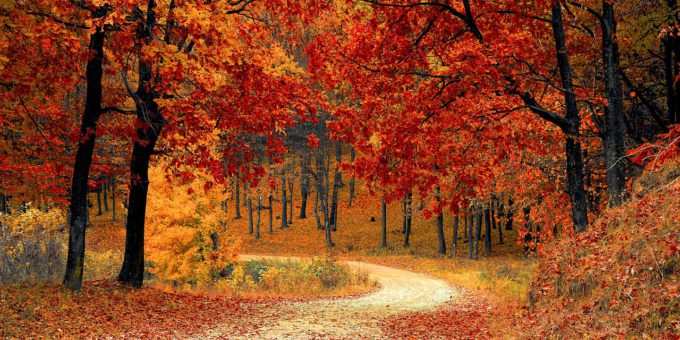
A ninja warrior obstacle course might ramp up adrenaline in one corner of a park, but vivid murals can balance that energy with calm. Paths paved in compacted crushed rock lead visitors toward painted walls that slow the pace and invite reflection. Nearby, the same resilience found in premium driveway coatings inspires artists to choose long-lasting, low-VOC paints for outdoor masterpieces. Together, these features reveal how thoughtful design transforms open space into a sanctuary for both excitement and tranquillity.
Colour, Calm, and Community
Murals do more than brighten blank surfaces; they influence mood through colour psychology. Soft blues and greens mimic foliage and sky, lowering heart rates and encouraging deeper breathing. Warm earth tones echo bark and soil, grounding passers-by in a sense of place. When people stroll past art that mirrors natural palettes, cortisol levels dip and the mind shifts from hurried problem-solving toward gentle observation. Community groups often co-design mural themes, weaving local flora, fauna, and stories into park identity. This collaborative process itself fosters social cohesion—residents who help paint a wall feel ownership over the space and treat it with care.
Strategic Placement for Maximum Effect
Park planners position murals where foot traffic naturally slows: along winding paths, near seating areas, or at the approach to community gardens. Viewers linger longer when artwork appears at decision points such as junctions or gateways, giving colour a chance to work its psychological magic. Tall retaining walls beside playground fencing become storyboards visible to both children on swings and parents on benches, creating shared talking points. Even the underside of pedestrian bridges can host upside-down landscapes that surprise canoeists and walkers alike, prompting playful curiosity without disrupting park sightlines.
Materials That Stand the Test of Weather
Outdoor art must survive full sun, winter frost, and the occasional overzealous sprinkling system. Artists increasingly select mineral-based silicate paints that chemically bond with masonry and allow moisture to escape—a critical feature for preventing blistering on older concrete. For timber panels, breathable acrylic-alkyd hybrids flex with seasonal expansion, maintaining crisp edges on intricate line-work. Anti-UV clear coats, free from heavy metals, lock in pigment vibrancy for a decade or more, reducing maintenance budgets. Some councils specify graffiti-resistant sacrificial layers: if tagging occurs, custodians spray warm water to dissolve the top barrier, removing ink while preserving the mural beneath.
Soundscapes and Visual Harmony
While art appeals to the eye, its calming influence extends to the ear. Research shows that when visitors focus visually on engaging scenes, perceived loudness of urban noise drops by up to 10 dB. In parks bordering busy roads, murals combined with low hedging or decorative fencing buffer sound, effectively creating micro-oases. Designers often synchronise brush-stroke rhythm with surrounding textures: a repeating leaf motif might echo the rustle of nearby trees, while sweeping wave patterns complement water features. The multisensory cohesion reinforces serenity and makes modest open spaces feel expansive.
Engaging All Ages
Children engage differently from adults; they look for narratives and opportunities to interact. Muralists respond by embedding hidden creatures or subtle patterns visible only at child height. QR codes at the edge of artwork can launch mini audio tales voiced by local storytellers, encouraging families to slow down and listen together. Schools nearby may adopt a panel for annual repainting, turning art into a living classroom on biodiversity or First Nations history. This cyclic refresh keeps the park dynamic while teaching stewardship and respect for public property.
From Blank Wall to Cultural Canvas: A Case Study
In suburban Melbourne, a 60-metre storm-channel wall once covered in peeling grey now bursts with a gradient of sunrise hues framing silhouettes of native birds. The council’s brief was clear: lift amenity without adding structures that could clutter limited green space. Artists consulted residents at weekend pop-ups, compiling favourite local birds and memories of morning jogs along the creek. Over three weeks, volunteers primed, projected, and painted sections in shifts. Since completion, weekly visitor counts—measured by passive infrared counters—have risen 18 %. Anecdotal surveys note fewer instances of anti-social behaviour and a spike in weekend yoga groups that choose the mural’s quiet foreground as their practice zone.
Economic and Environmental Benefits
Calmer parks translate into reduced vandalism, lowering repair costs. Enhanced visitor numbers boost foot traffic for nearby cafés and Sunday markets, feeding local economies. Eco-conscious paint selections cut volatile-organic-compound emissions, protecting both artist health and urban air quality. Moreover, art projects often secure grant funding earmarked for community wellbeing, offsetting municipal expenses. By increasing perceived safety and attractiveness, murals can also support property value stability in surrounding streets, creating a virtuous cycle of upkeep and pride.
Maintenance and Evolution
No mural is entirely maintenance-free, but proactive care keeps colours crisp. Annual inspections identify tiny cracks or moss growth early; a quick wash and a dab of matching paint address most issues. Some councils schedule “refresh days” where original artists reclaim scaffolds to tweak gradients or add new elements, ensuring relevance as neighbourhood demographics evolve. Documenting colour codes and primer types in a public database means future artists can replicate or sensitively adapt earlier work, preserving continuity while embracing change.
Future Trends: Smart and Sustainable Surfaces
Emerging photo-luminescent pigments charge under sunlight and glow after dusk, offering gentle wayfinding without electricity. Thermochromic sections that shift shade when temperatures climb could visually cue users to hydrate or seek shade. Researchers are also exploring biogenic binders derived from algae, potentially turning walls into carbon-sequestering surfaces. Interactive augmented-reality overlays—viewable through smartphones—might add moving creatures or historical re-enactments layered atop physical paint, engaging tech-savvy teens who might otherwise breeze past.
Conclusion
Park murals are far more than decoration; they are strategic tools for cultivating serenity amid urban bustle. By combining deliberate colour choices, durable eco-friendly materials, and inclusive community participation, designers create spaces that soothe minds, nurture belonging, and elevate local biodiversity narratives. The result is a park where high-energy play zones coexist harmoniously with contemplative pathways—a living testament to how art, nature, and thoughtful planning can paint tranquillity into everyday city life.




